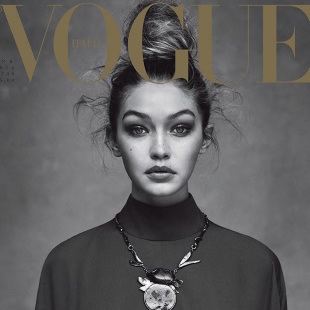Top model Manon Leloup speaks with WWD about her latest endeavour: a documentary called Speaking Dolls. Here are our highlights:
But presumptions aside, the day-to-day life of this industry’s top catwalkers is largely a mystery. Manon Leloup, the 22-year-old French model, one of the most in-demand girls in recent years (she walked in 37 fall shows), recently codirected a new documentary with Niels Benoist titled “Speaking Dolls” (now available on Vimeo). It attempts to pull back the curtain, for better and for worse.
“I’d like to show the reality of this unusual job,” Leloup says in the first few minutes of the film. But unlike other docs in a similar vein, “Speaking Dolls” doesn’t make the predictable case. When allusions to industry reform (e.g. the CFDA Health Initiative and the like) come up, she recoils. “No, no. I approached it with no agenda,” she says, over a glass of sauvignon blanc in New York. “The movie isn’t about a single message, like, ‘This is a bad thing.’ It is just about what is the reality of young girls living the modeling experience. It’s not a message, it’s just to show the truth from our perspective.”
Leloup is in town from Paris for a few days, mostly for a Vogue magazine shoot. Before that, she had a brief respite in the French countryside after doing the haute couture shows (she walked four, including Armani Privé and Jean Paul Gaultier). “I’ve been very busy,” she says. “But I’m happy when I’m busy. That’s why it was good to shoot this during the shows. I prefer to be thinking about something else and not ‘I’m so tired.’”
“Speaking Dolls” documents Leloup’s journey — and, by proximity, the journey of other working models — through the multicity circus of spring 2014’s fashion month. With Leloup often behind the camera, it focuses on a handful of her cohorts: Yumi Lambert, Marine Deleeuw, Cora Emmanuel and Pauline Hoarau. She ended up shooting more than 14 hours of film, which was whittled down to 52 minutes. “Editing was a big mess,” Leloup says. The film covers everything from the seemingly prosaic — Lambert stopping into a Potbelly in Times Square to shove a football-size cheeseburger down between castings — to models’ real concerns, namely making a living off a job with an inherently short shelf life. “At Phillip Lim, one girl looked just like me. It’s the girl who opened the show. People say it’s my double,” Lambert says of fellow model Emma Waldo in one scene. “Despite the fact that they know me, that they like me, she is a new, new face. She opened the show, not me. Sometimes, I just feel like I’m not fresh enough. I feel old, even if I’m only 18 years old.”
Leloup explains that more than anything she wanted to show that models, deemed essentially anonymous faces by most attending the shows, have a unique perspective on the industry. “We are in the middle of the most intimate, most private parts of fashion. We see every part of it. I wanted to show what we observe,” Leloup says. “I wanted to give us a voice, a third dimension. We’re not just a face.”






